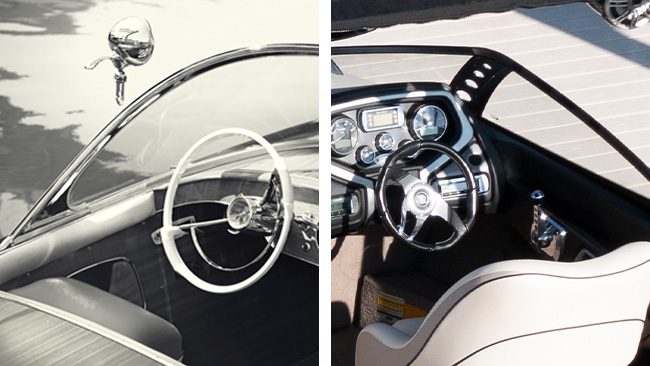Much like any other industry, marine textiles have greatly improved over the years due to new technology, research, and a lot of testing. From shade tops and covers to marine upholstery, these fabrics fight against the sun, salt corrosion, and even the occasional surprise storm.
These transformations have made an incredible impact for all mariners. Not only are today’s marine textiles more protective, but they’re also much more versatile. Below, we’ll explore the journey of marine fabrics throughout history.
Historical Background & Advancements of Marine Fabrics
When sailors, scientists, and governments get together, something magical is bound to happen. That said, we’ve sailed past the days of rough canvas and are now in an age of high-tech marine fabric.
Through a lot of testing and research, we now have a much better understanding of how mother nature affects marine fabric, and how we can combat it.
How it Started
Sailors used to rely on canvas and linen for sails, awnings, and boat covers. While those natural fibers were great for enhancing sustainability, it led to various challenges, including a heavy weight, excessive water absorption, and being prone to rot and mildew. Plus, the longer they stayed in the sun, the more their appearance and functionality degraded.
The Shift to Synthetic Fibers
When materials like nylon and polyester came along, it marked a significant advancement. Modern synthetic materials, like marine vinyl and solution-dyed acrylics, are:
These advancements, along with improvements to marine accessories, have helped make what used to be a grueling journey over the seas much more comfortable and feasible in the modern age.
Influence of Fabric Enhancements on Boat Design and Performance
Marine textile innovations have absolutely revolutionized the boating industry. A few of the most notable improvements include:
- Lighter & Faster Boats: The reduced weight from water-repellent fabrics helps improve speed and efficiency while on the water.
- Improved Sail Design: Better sailcloth materials leads to overall improved performance.
- Ability to Withstand the Elements: Durable, waterproof covers and marine tops provide protection in various conditions.
- Stylistically Flexible: Fade-resistant fabrics in diverse colors allow you to add a personalized touch to your boat while ensuring its protection. .
The Environmental Impact of Marine Fabric Updates
The modernization of marine upholstery fabrics hasn’t just enhanced overall performance, but it has also had a positive impact on environmental sustainability. That's because these long-lasting materials (ex. solution-dyed acrylics, marine-grade vinyl, etc.) greatly reduce how often you need to replace them. As a result, they create less material waste for the landfills.
Many leading brands are putting eco-friendly manufacturing processes first. They do this by focusing more on recycled materials while minimizing the amount of water and energy they consume during the production process. Additionally, the shift towards UV-resistant and mildew-resistant fabrics means there’s less of a need for chemical treatments, which reduces the eco-footprint.
Selecting Top-Quality Marine Textiles
At Trivantage, we offer a wide range of marine-grade fabrics, including Sunbrella® Horizon®, Stamoid® Marine Fabric, Hydrofend®, and other top brands. These brands, and many others, deploy cutting-edge science to improve the durability, UV resistance, and aesthetics of their marine fabrics.
From bimini tops to boat upholstery, our collection of high performance fabrics includes water-resistant and waterproof options, mildew-resistant materials, plus heavy-duty canvas fabrics. Explore our extensive selection of marine fabrics today to find the perfect fit for your next project.




